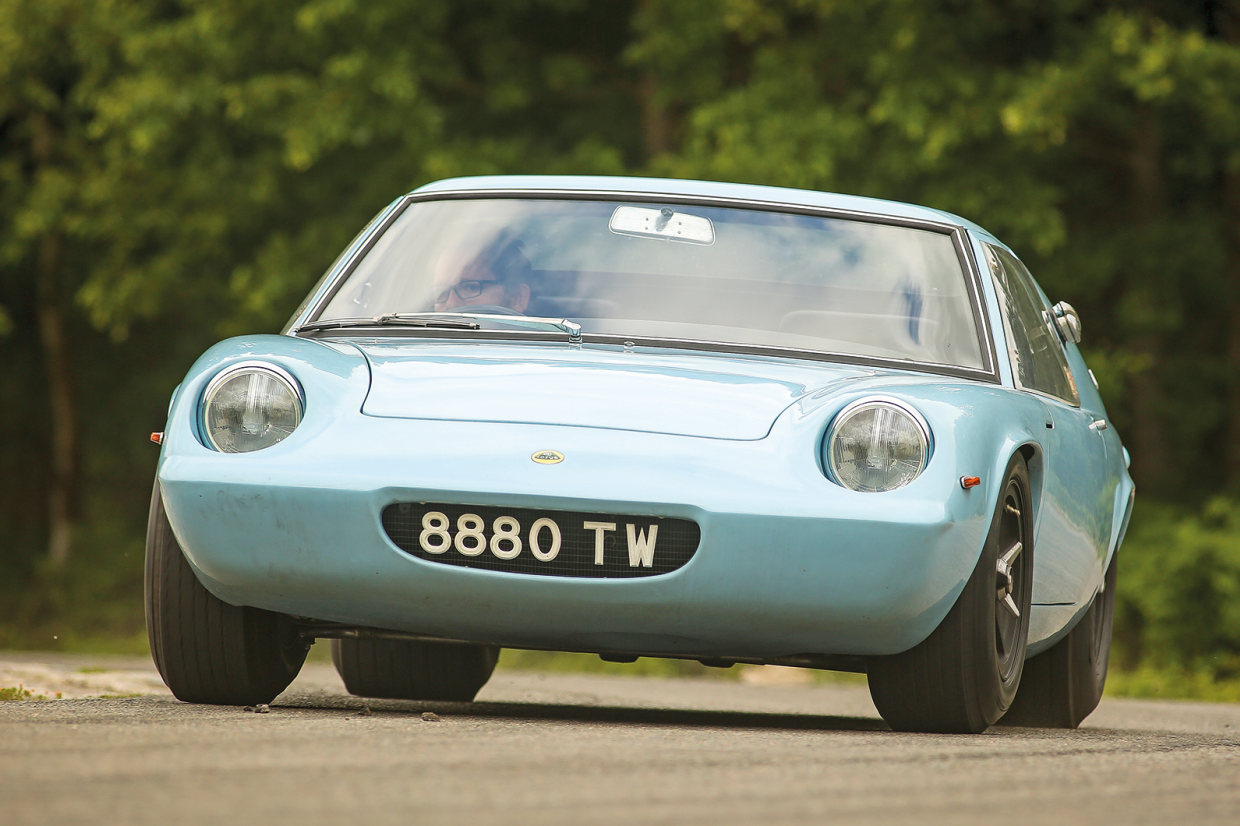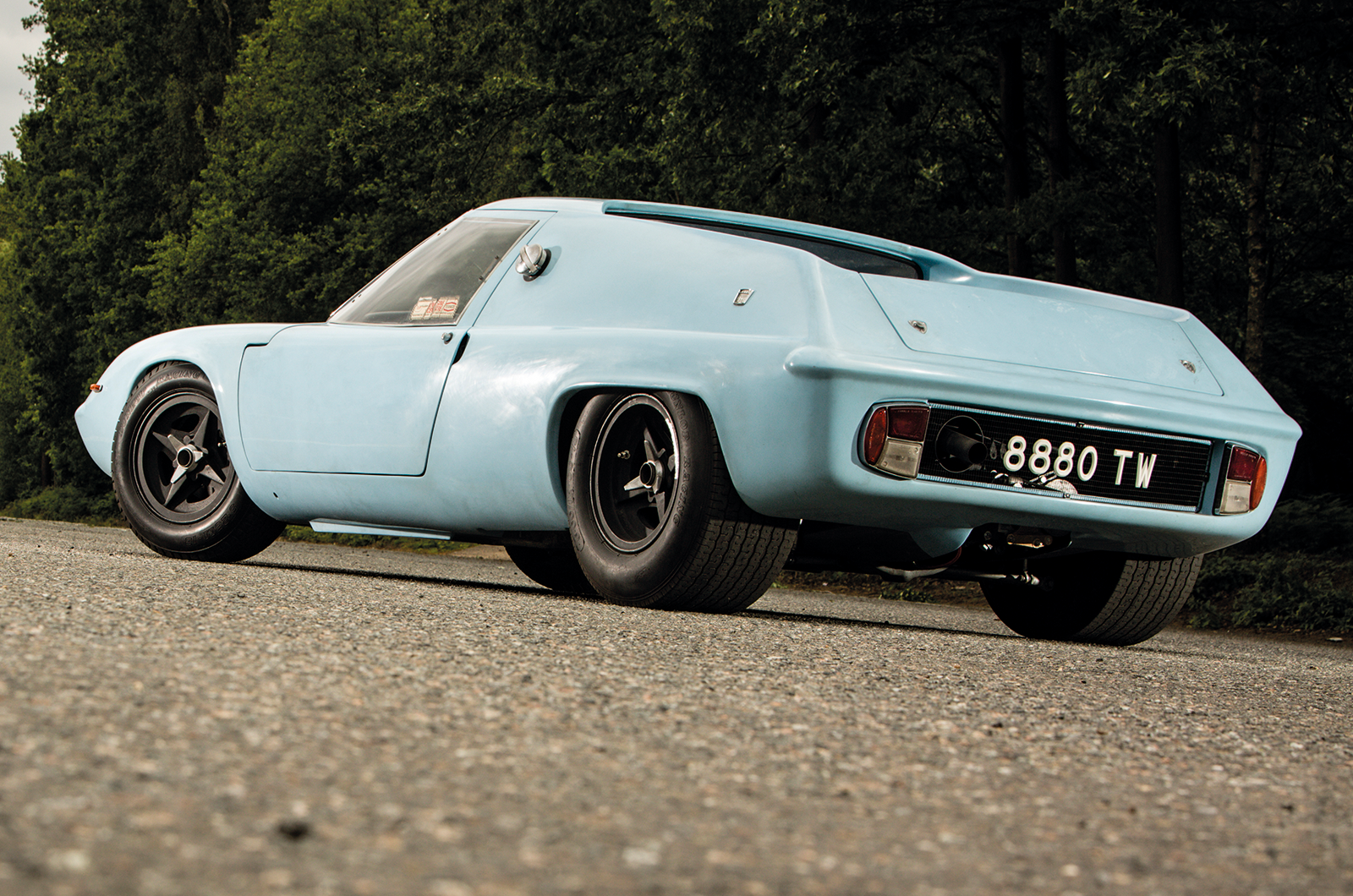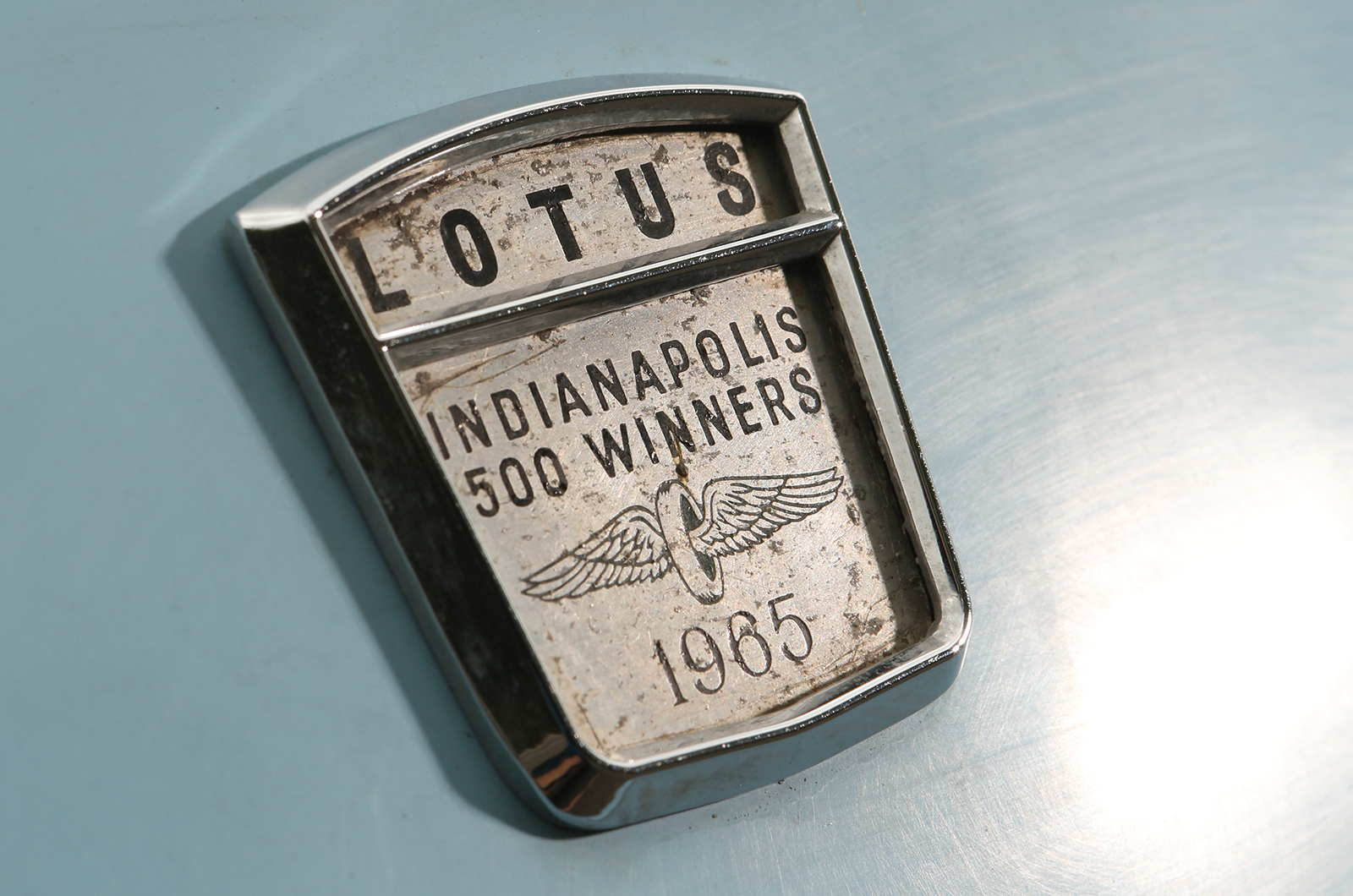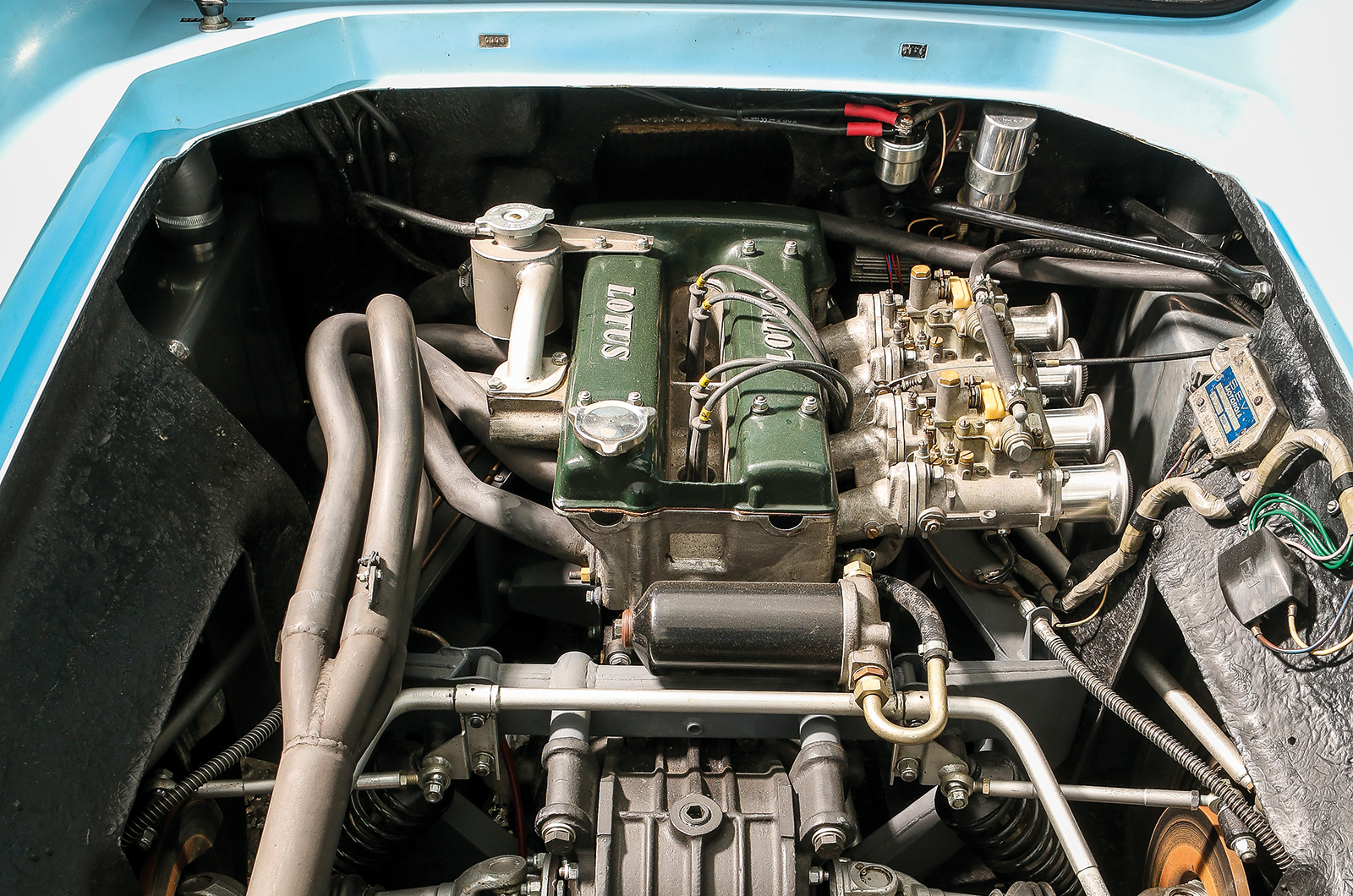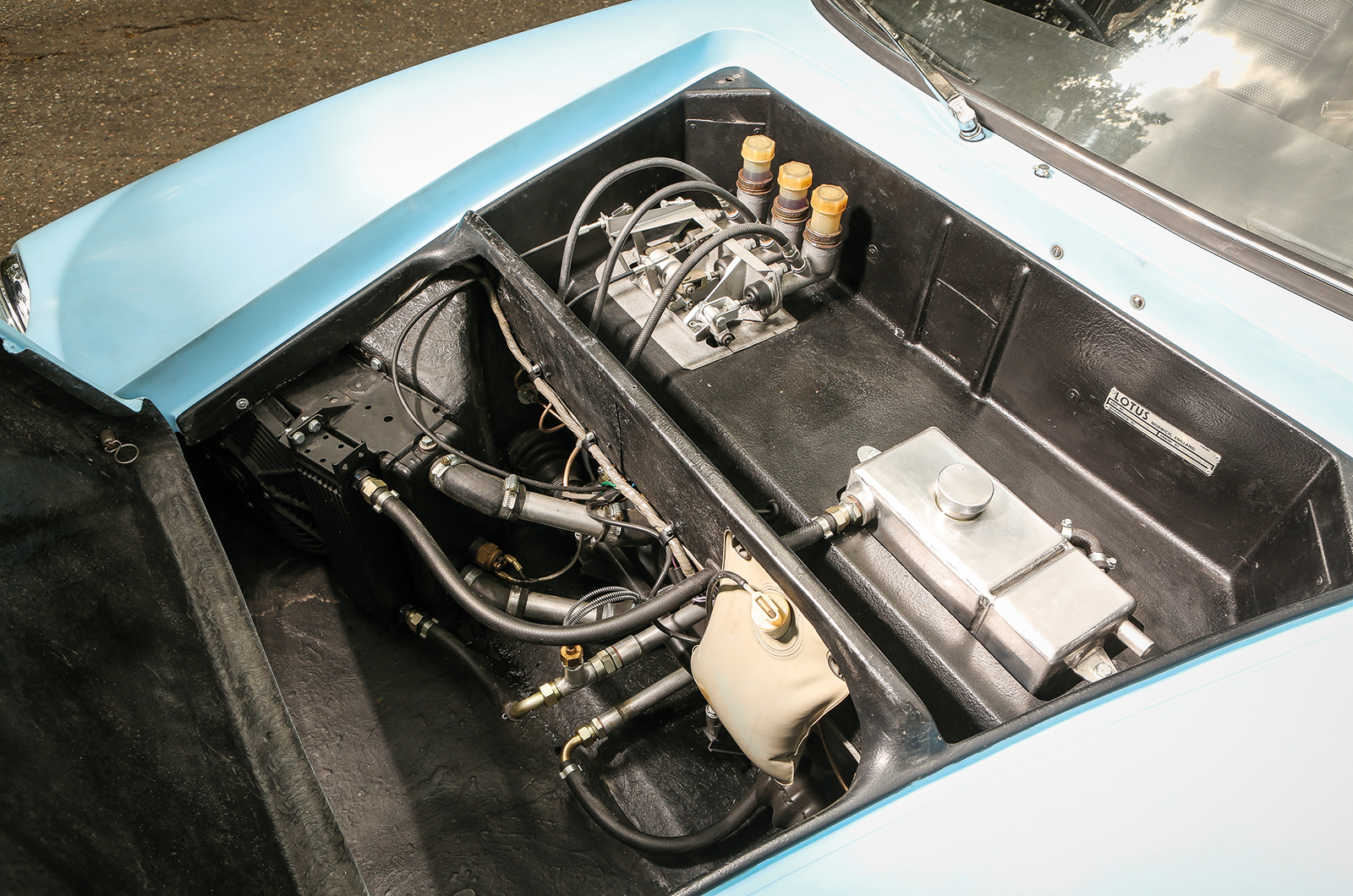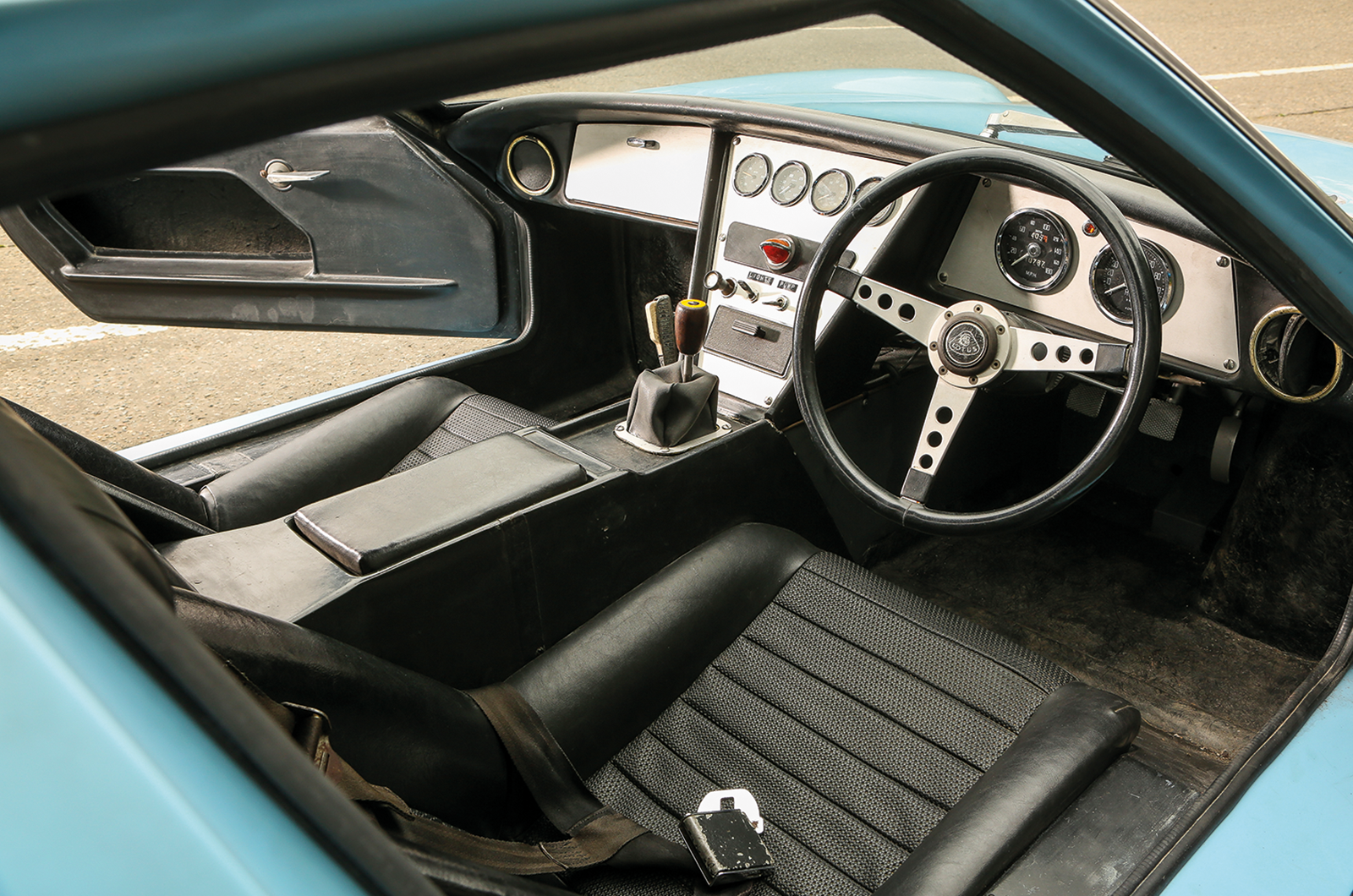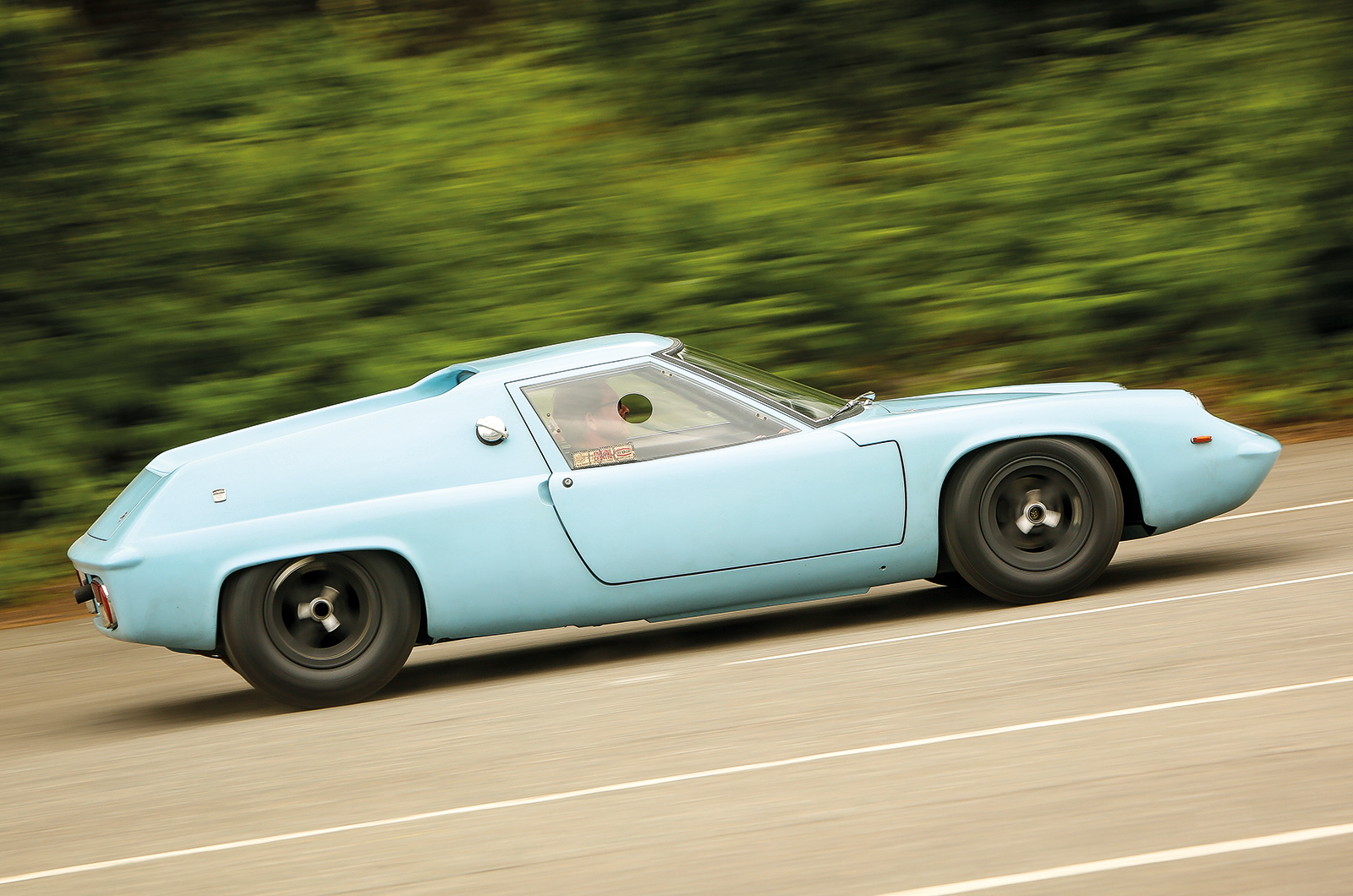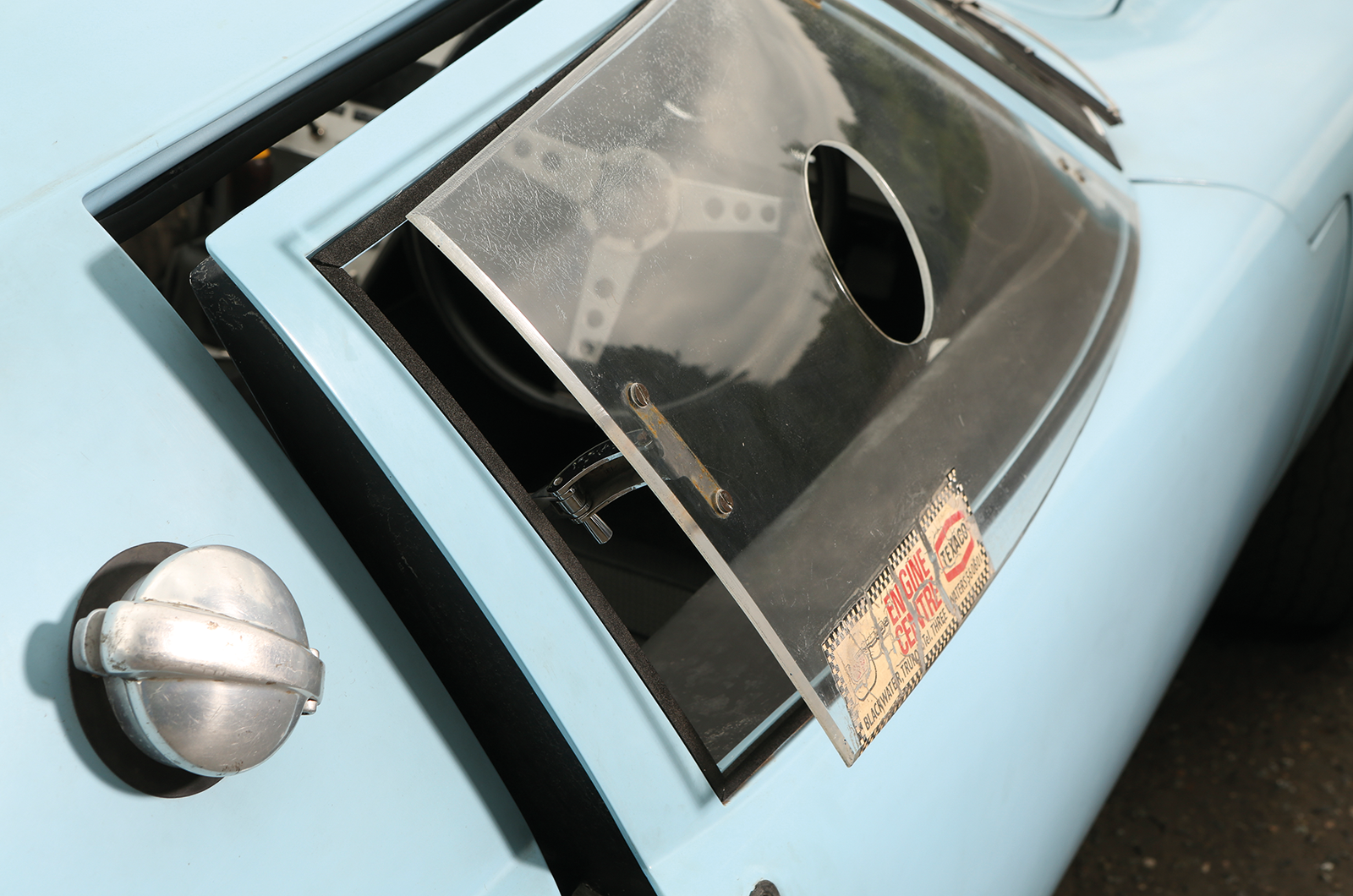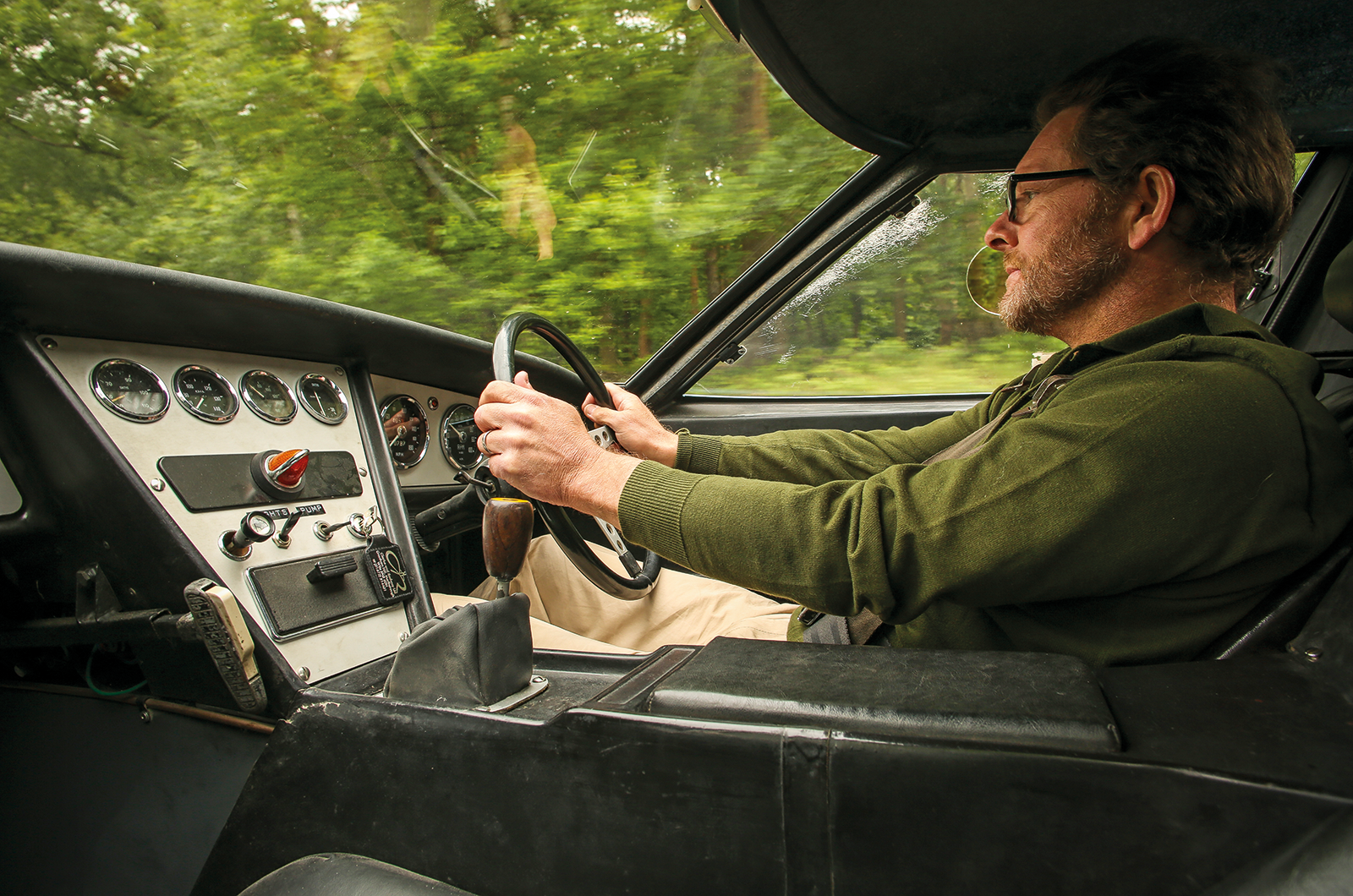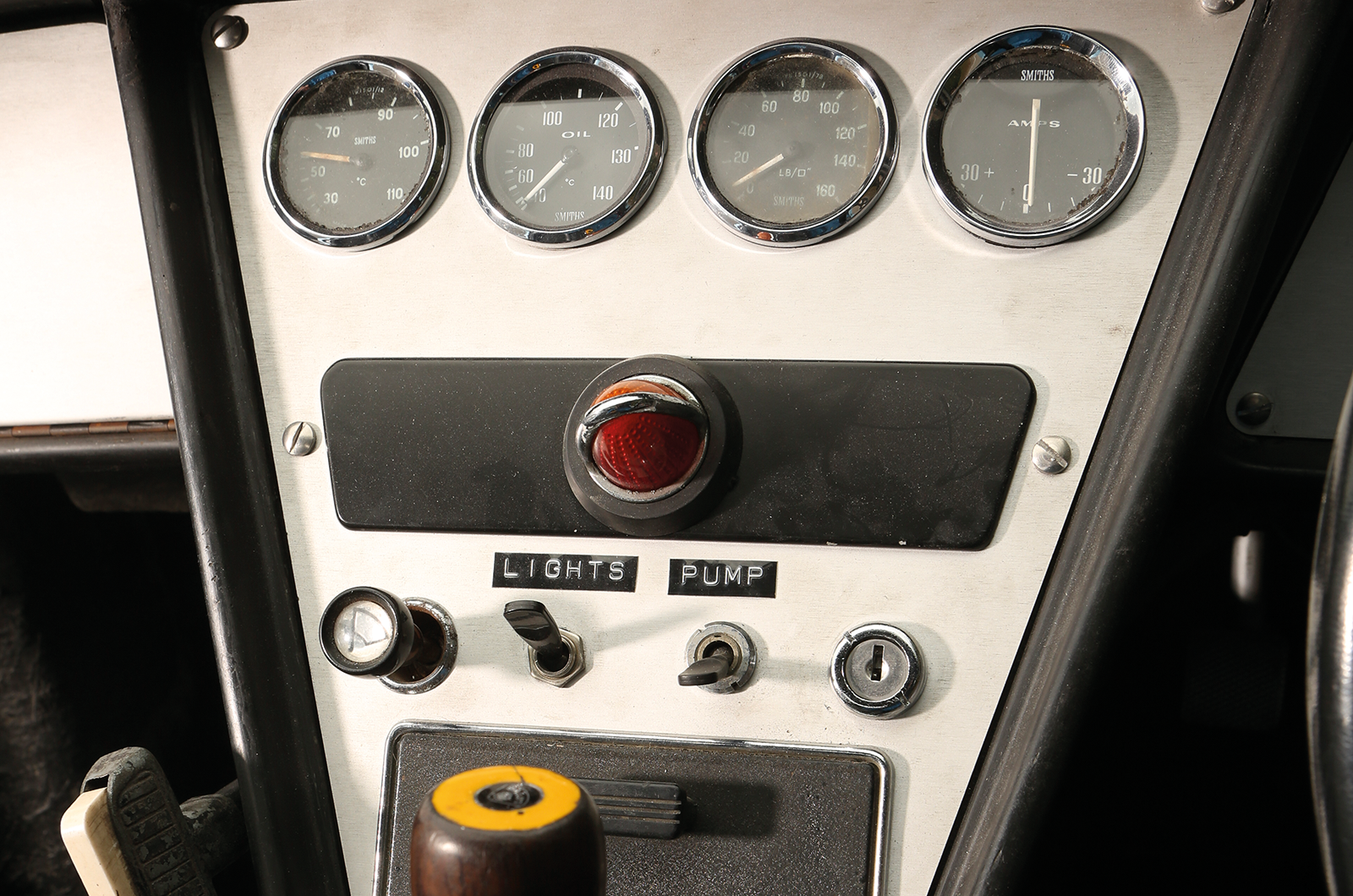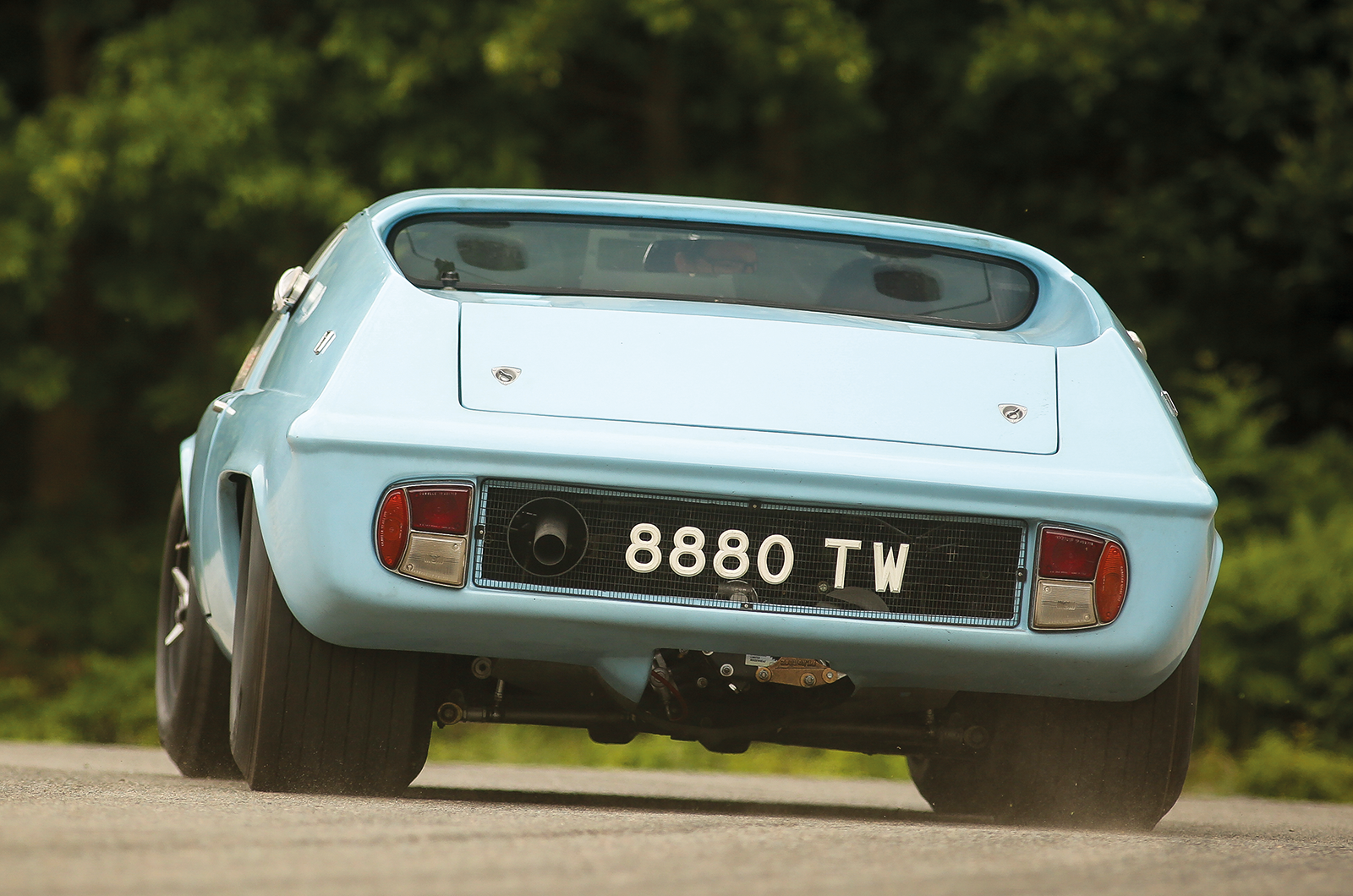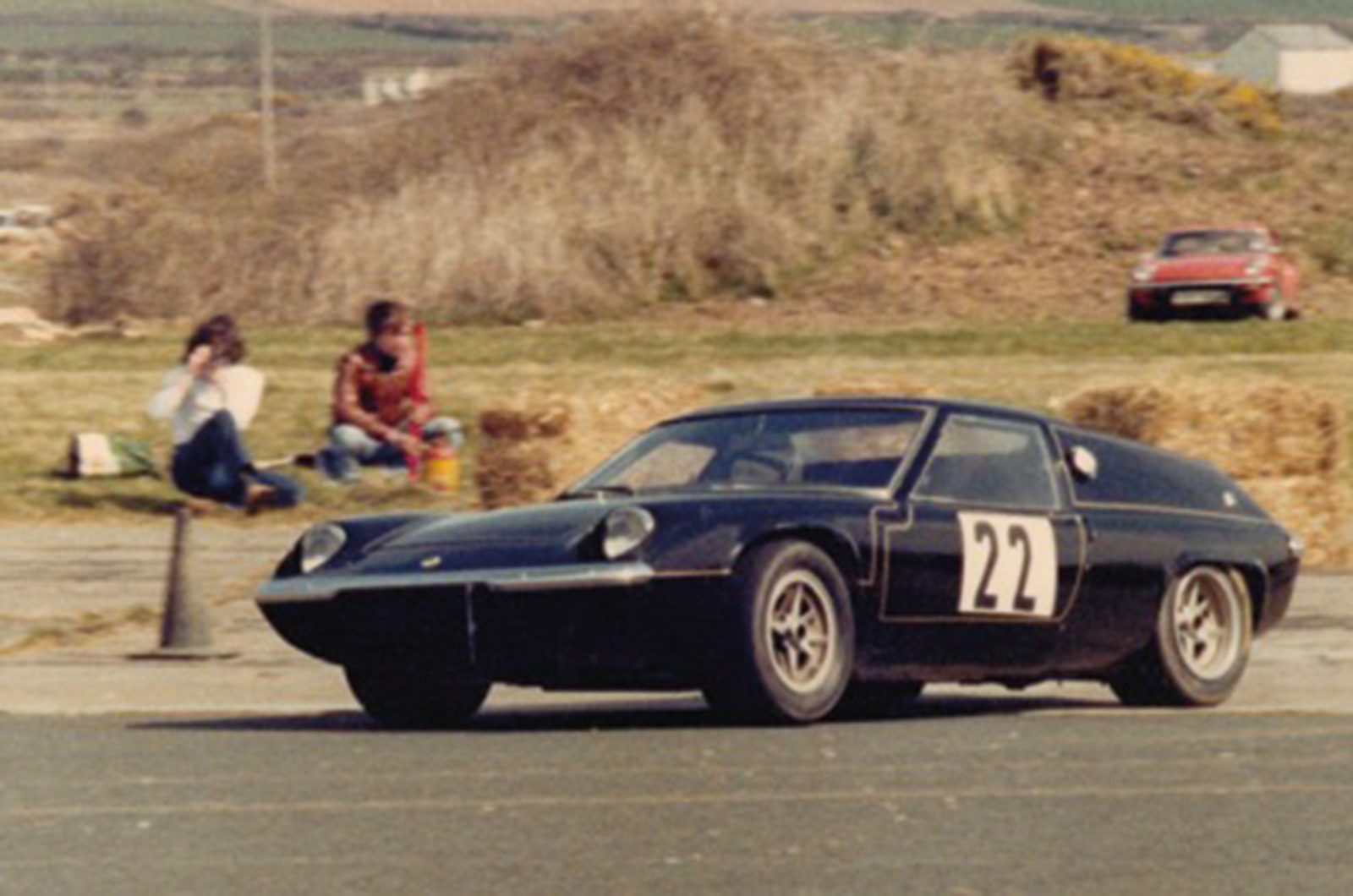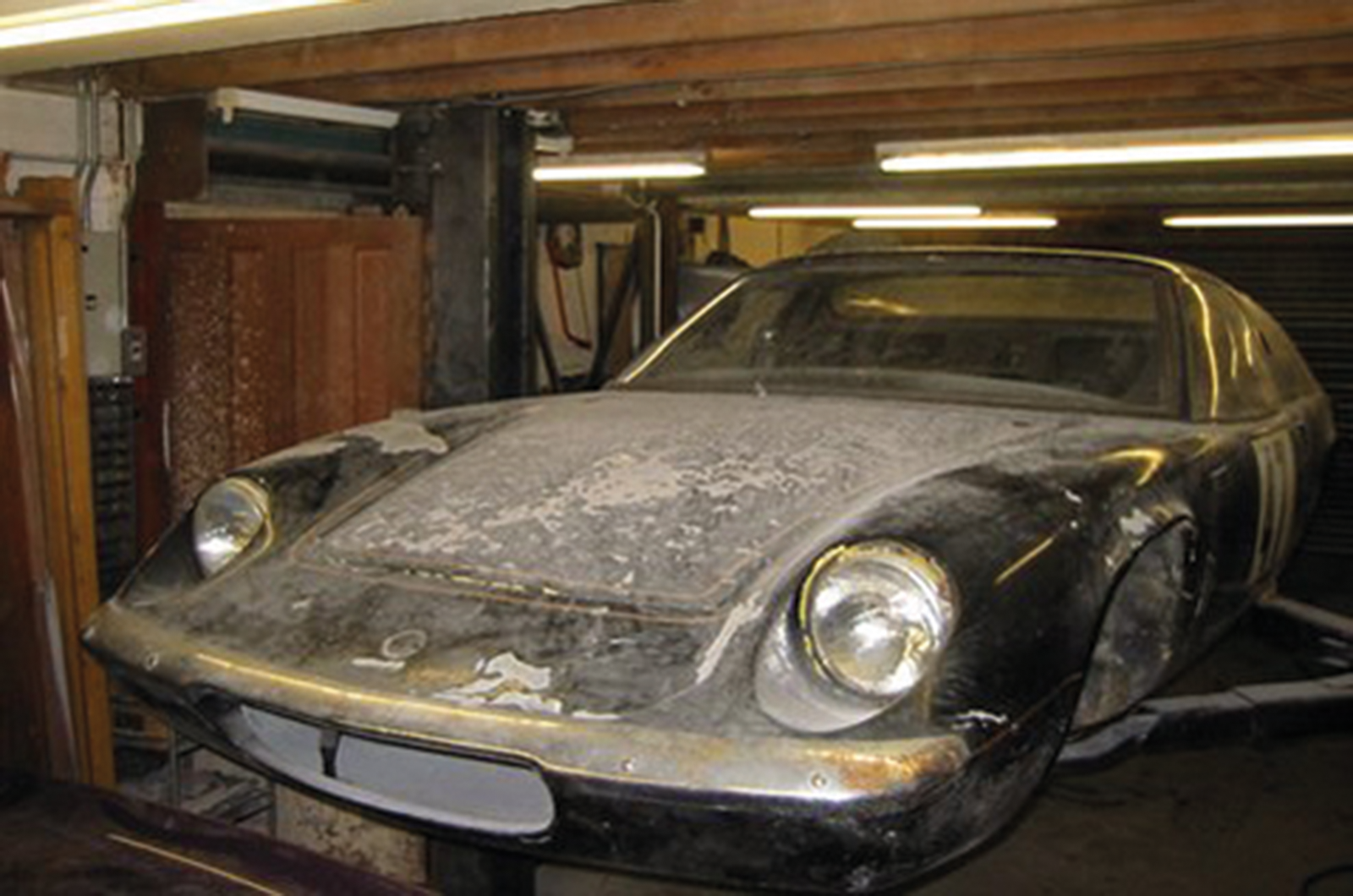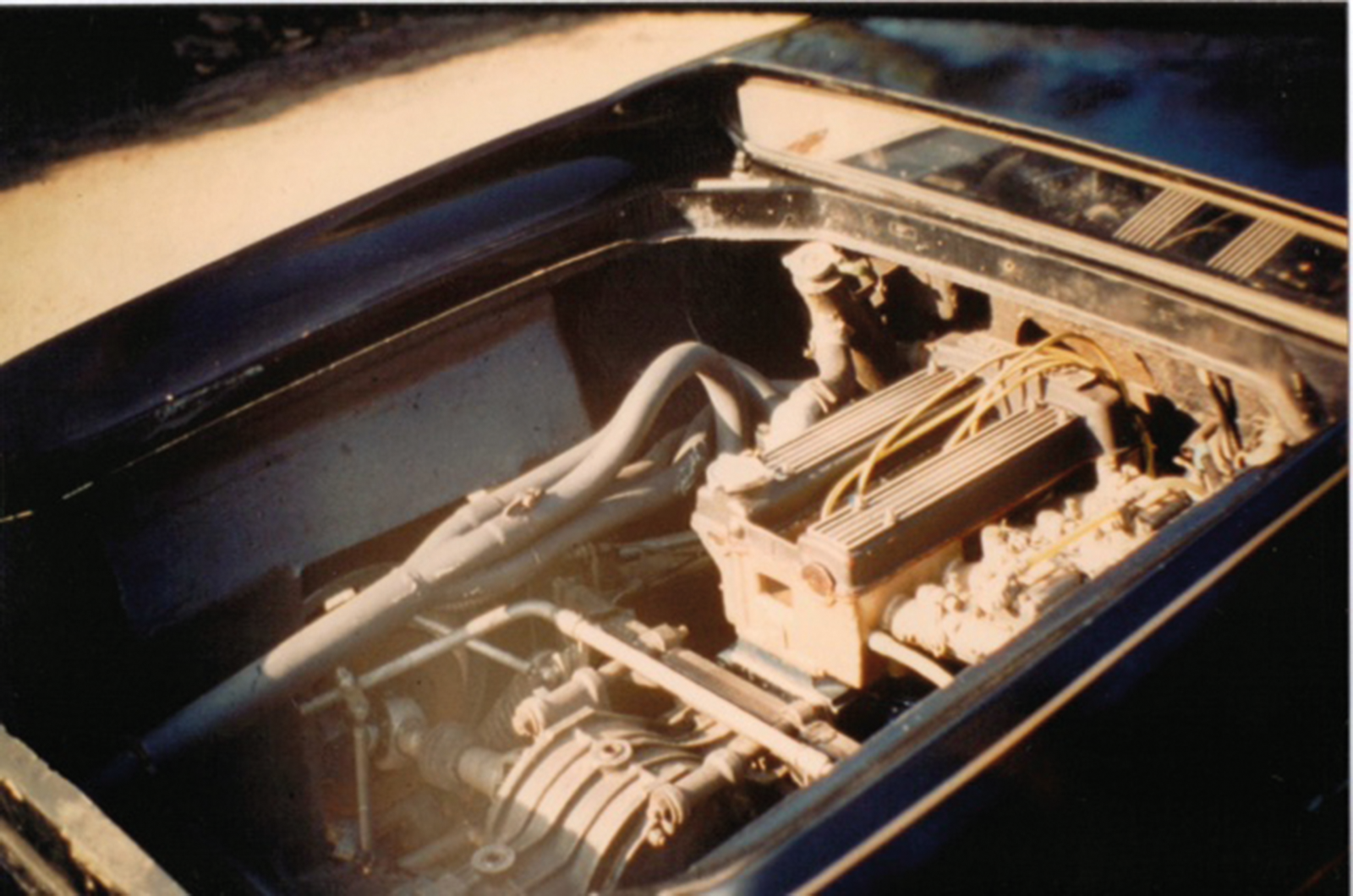Then why not consider the history, the dominance of the great John Miles with a 47, ruling Group 4 until usurped by the Chevron B8s?
Yes, this £2600 kit car (plus £50 if you wanted it built and exported) took on and vanquished, some would say humiliated, the big boys.
That’s not to say that it is a racer that you can’t use on the streets – the beauty of the 47 is that you can, just.
Make no mistake, though, this is not even some homologation special, but an out-and-out racer masquerading as a road car. Think McLaren M6 rather than F1.
If that doesn’t convince you, just fire it up again. Hell, just fire it up anyway…
Images: Tony Baker
This was first in our February 2016 magazine; all information was correct at the date of original publication
Lotus 47: restored without losing its soul
The Lotus 47 was resprayed in a JPS livery for the car’s second owner, here hustling 8880 TW at a sprint meeting
This particular 47 has a fascinating history, but with some big gaps.
Chassis 54 was delivered to the Scottish Auto Tech racing team in East Kilbride in December 1967 with the registration NUS 685F, which was changed to its current 8880 TW in 1970.
It’s pure conjecture, but could this have been for up-and-coming local hotshoe Tom Walkinshaw?
It changed hands, going to the other end of the country in Cornwall, in ’73 and was kitted out in JPS livery (in the history file, there’s a charming letter from the owner asking Lotus for permission to do this) and campaigned extensively.
The Lotus 47 was taken off road in the early ’80s for an overhaul that never happened (left); the car remained untouched for 20 years
After a crash-free career, the 47 was taken off the track for a rebuild in the early ’80s. Work stalled, however, because no replacement parts were being manufactured at the time.
As a result, the 47 remained in a semi-dismantled state for 20 years until the owner reluctantly decided to sell the car in 2003.
It was then bought by Peter Hartnett, who embarked on a full restoration to 1967 spec, with great care being taken to preserve as much of the original car as possible.
Enjoy more of the world’s best classic car content every month when you subscribe to C&SC – get our latest deals here
READ MORE
The Bourne supremacy: BRM’s Lotus Elan
Lola Mk6 GT: Broadley’s Ferrari-beater
Europa league final: Alpine A310 vs Lotus Europa
James Elliott
James Elliott is a former Editor of Classic & Sports Car
